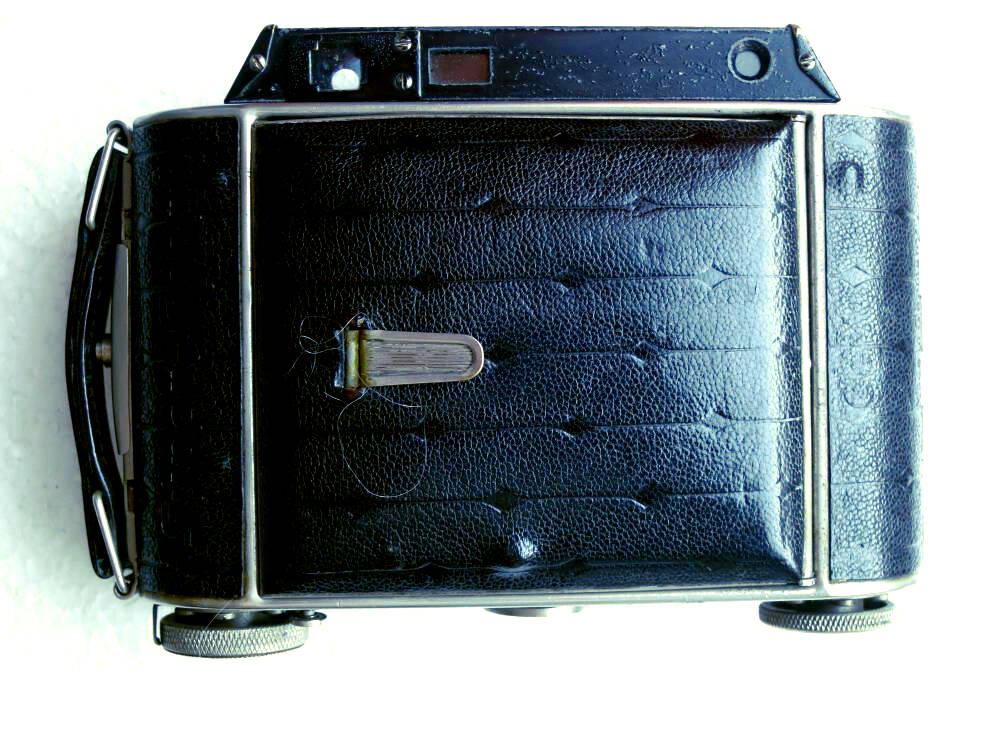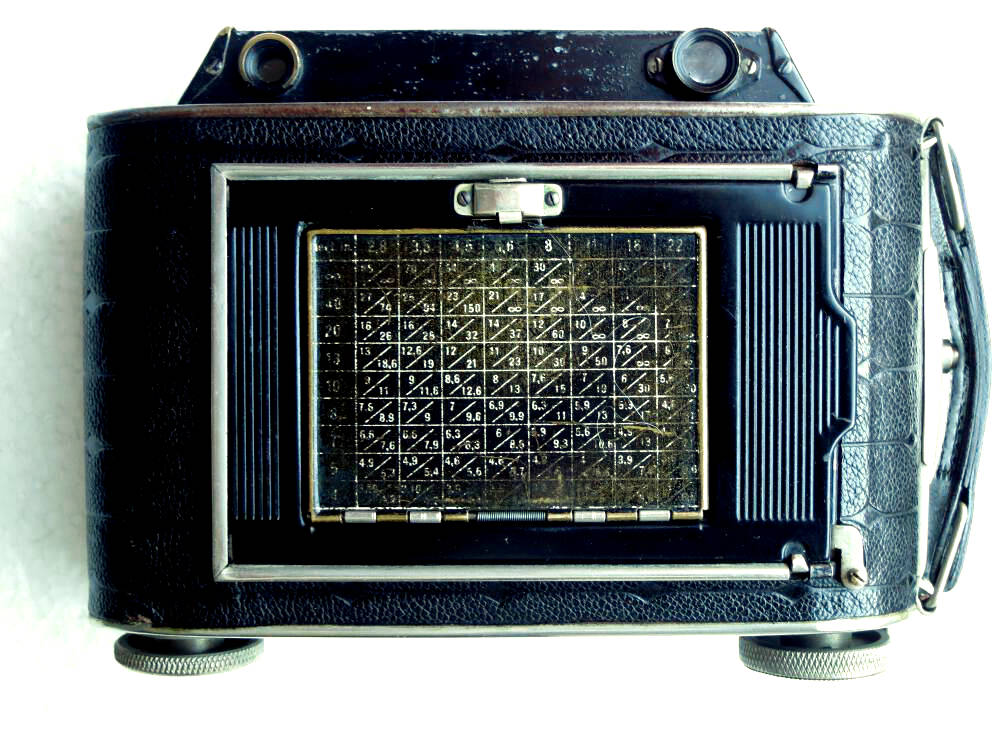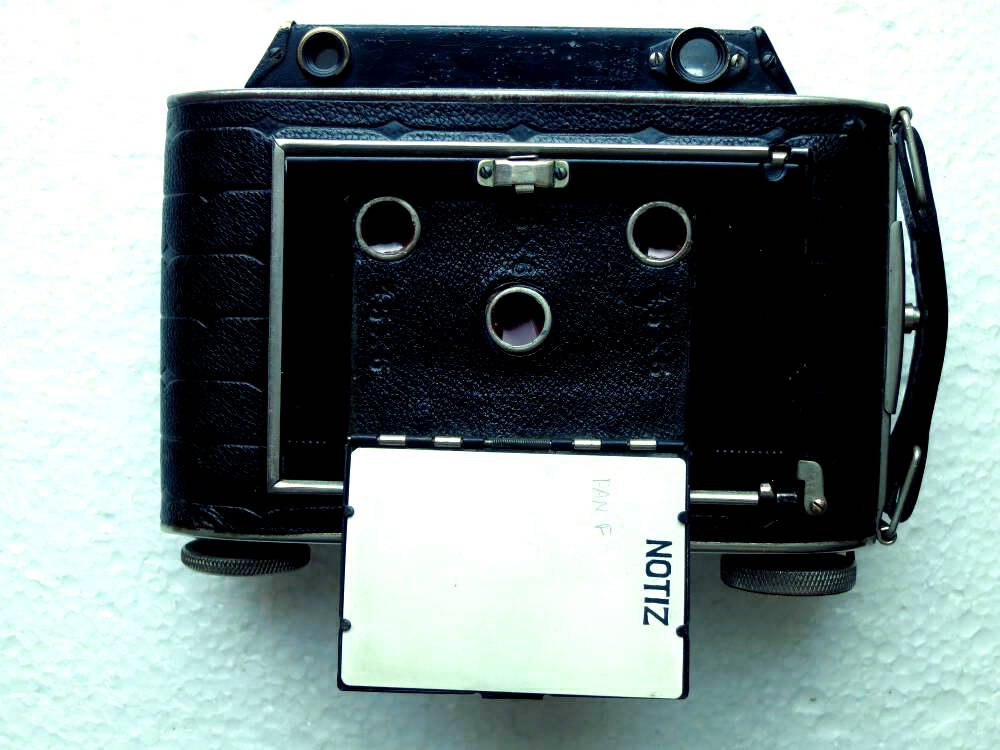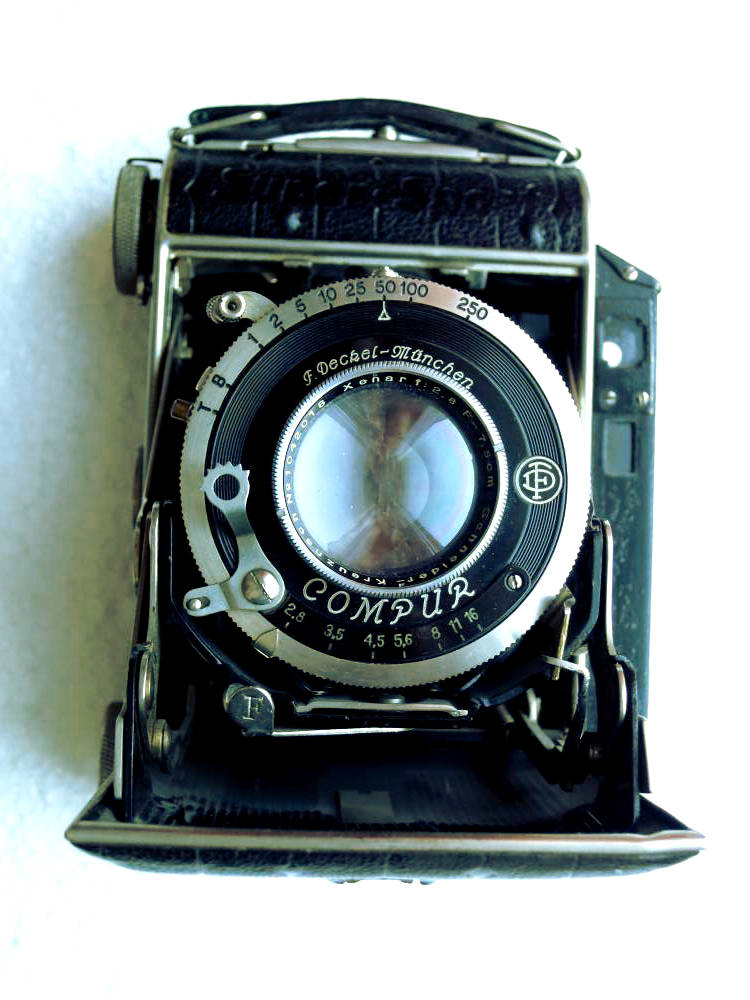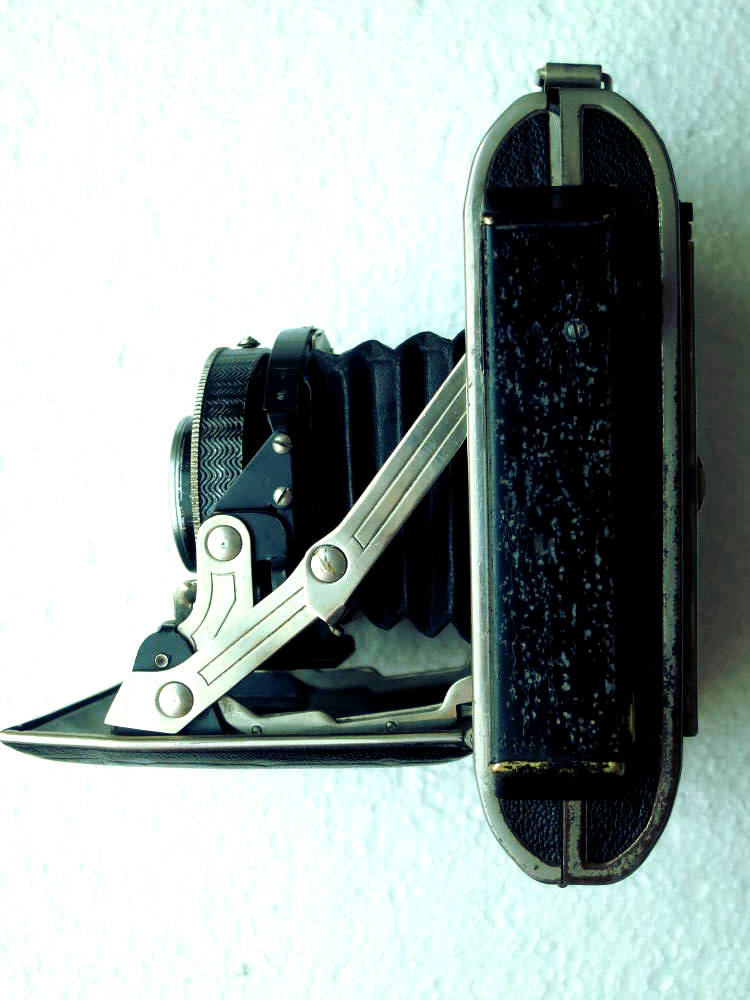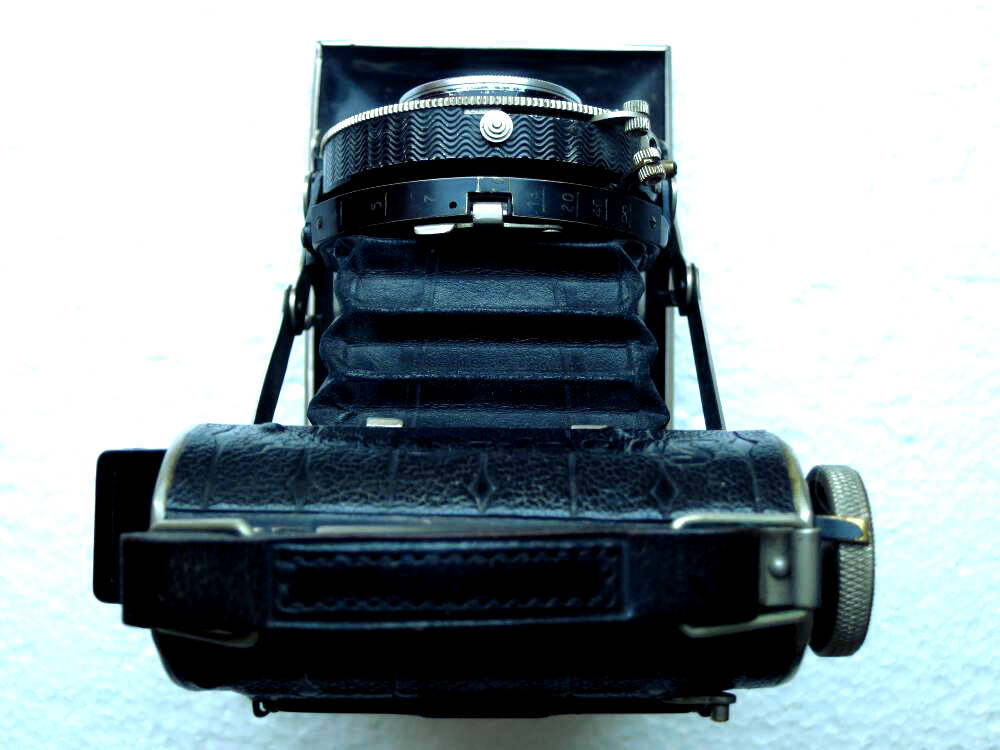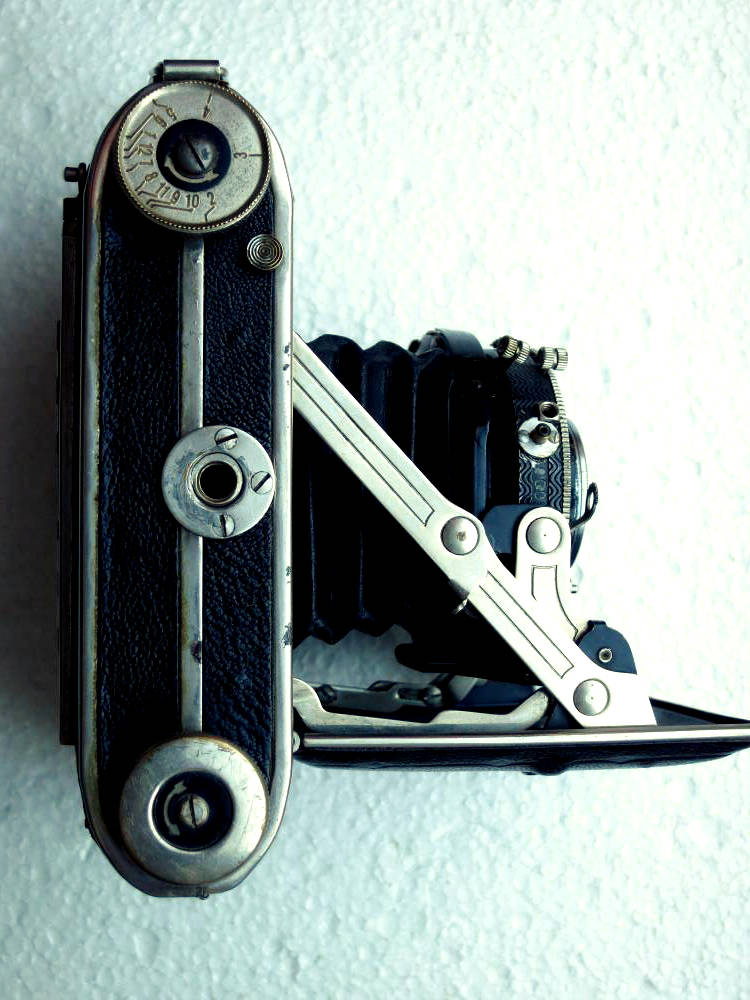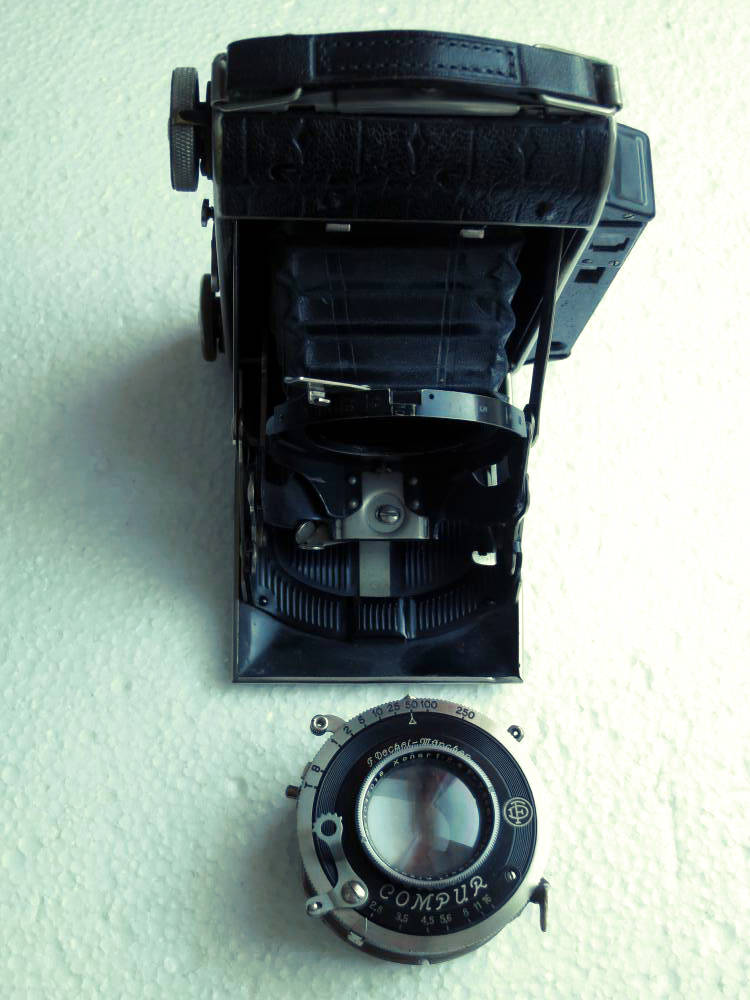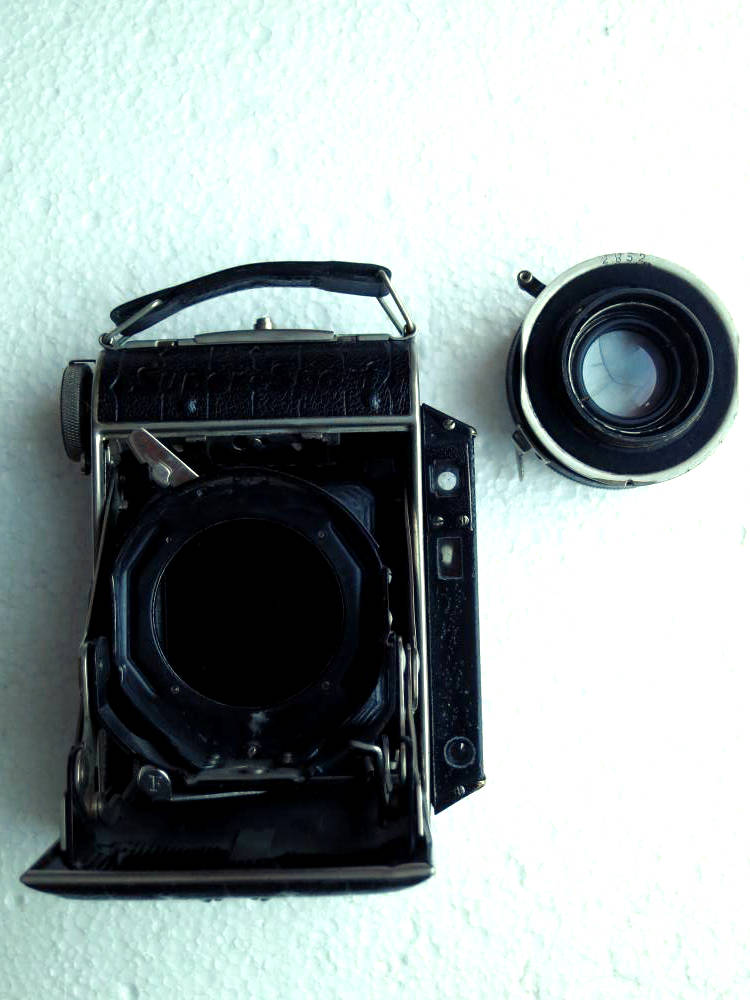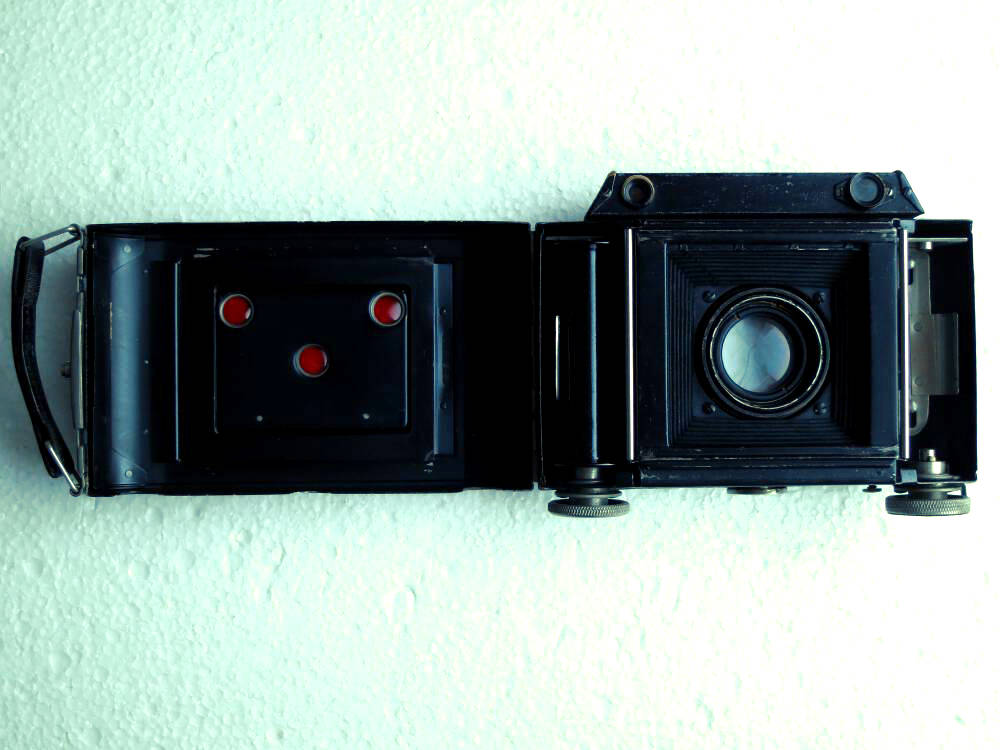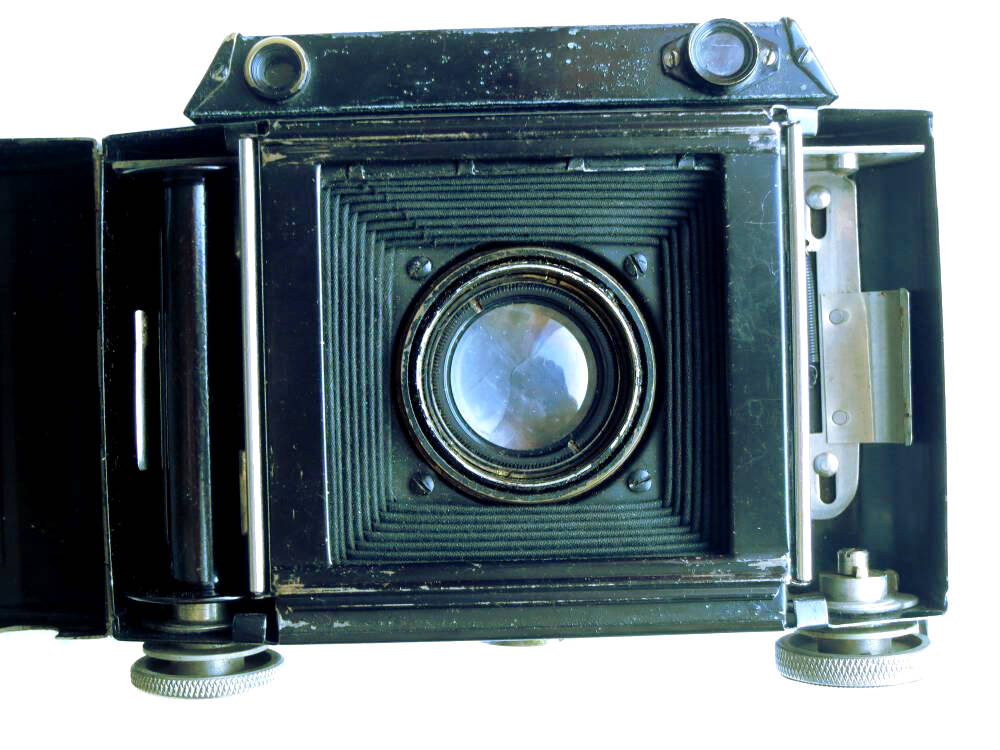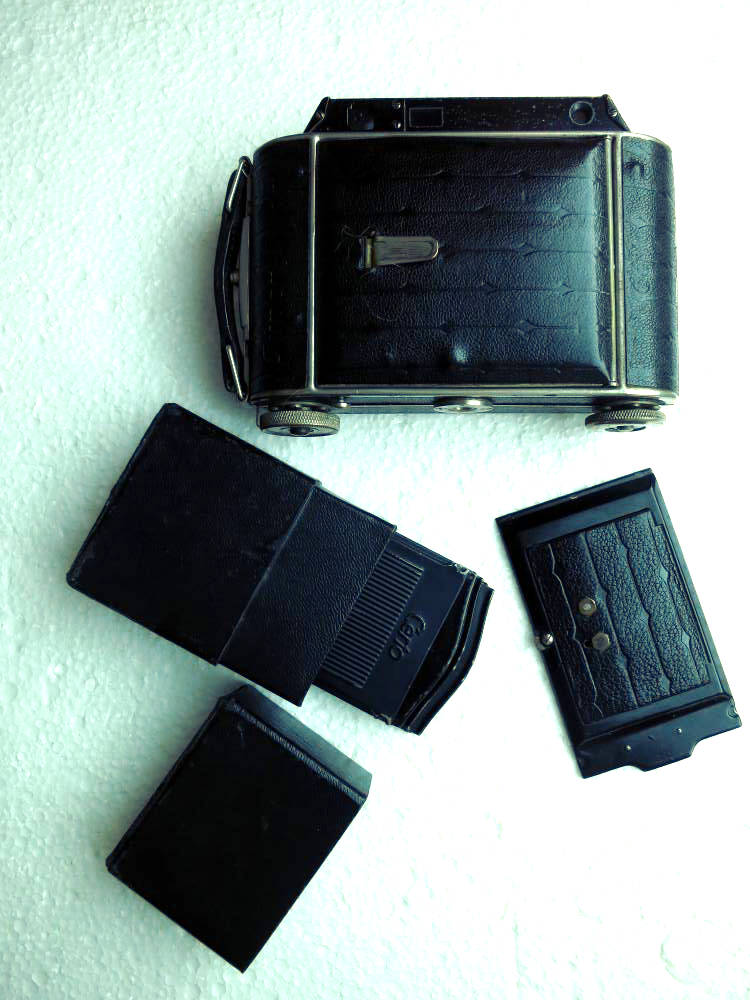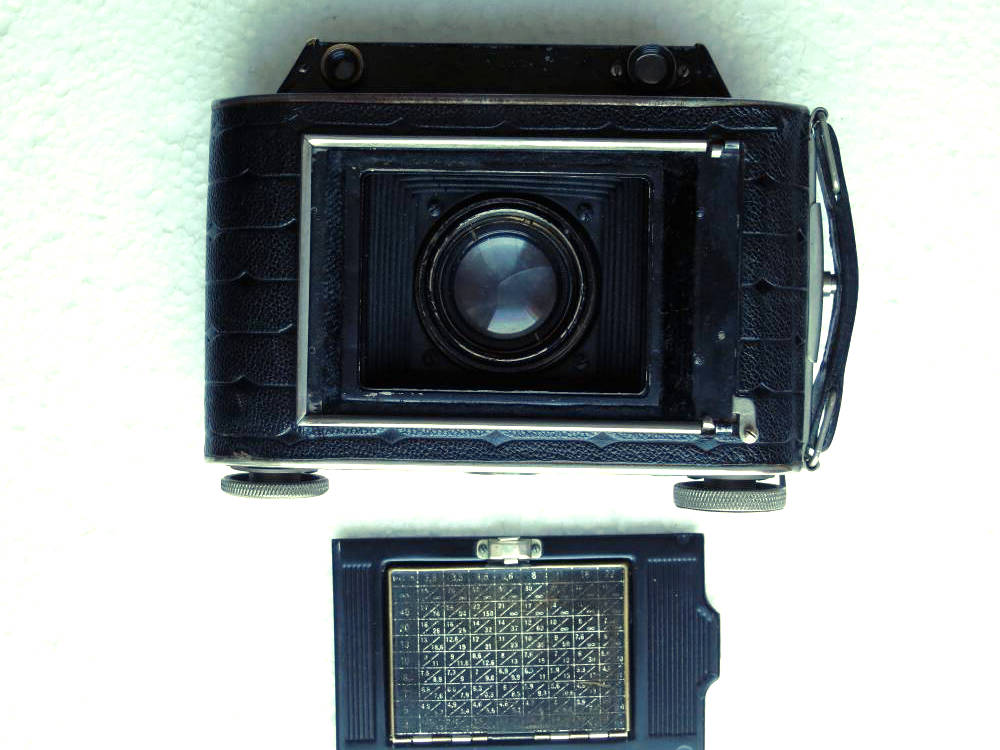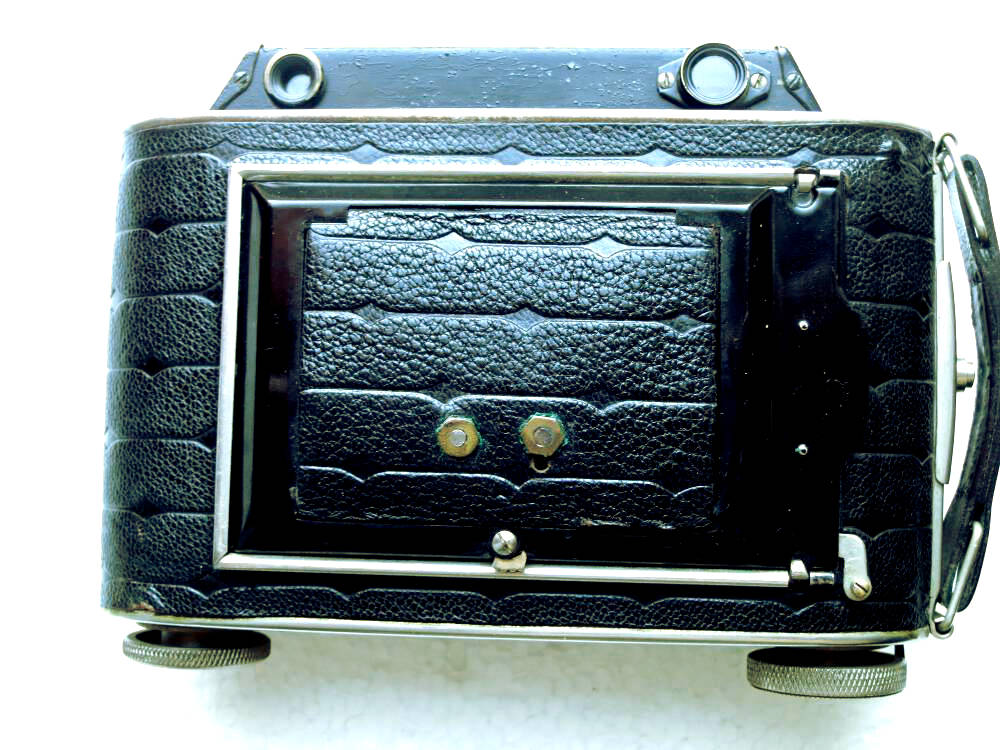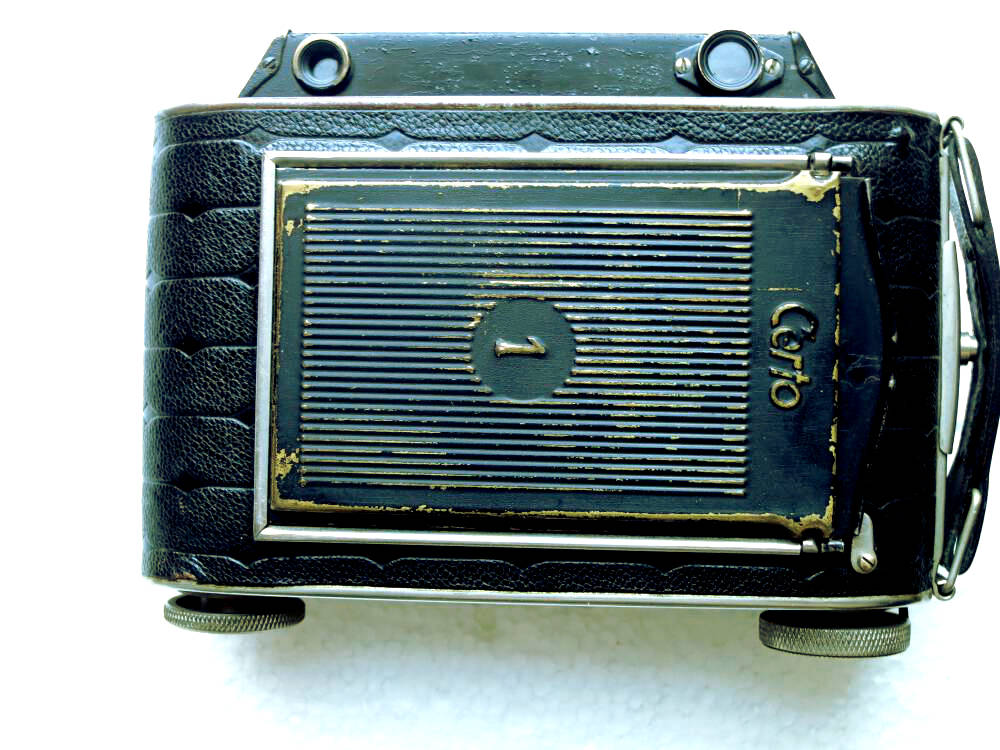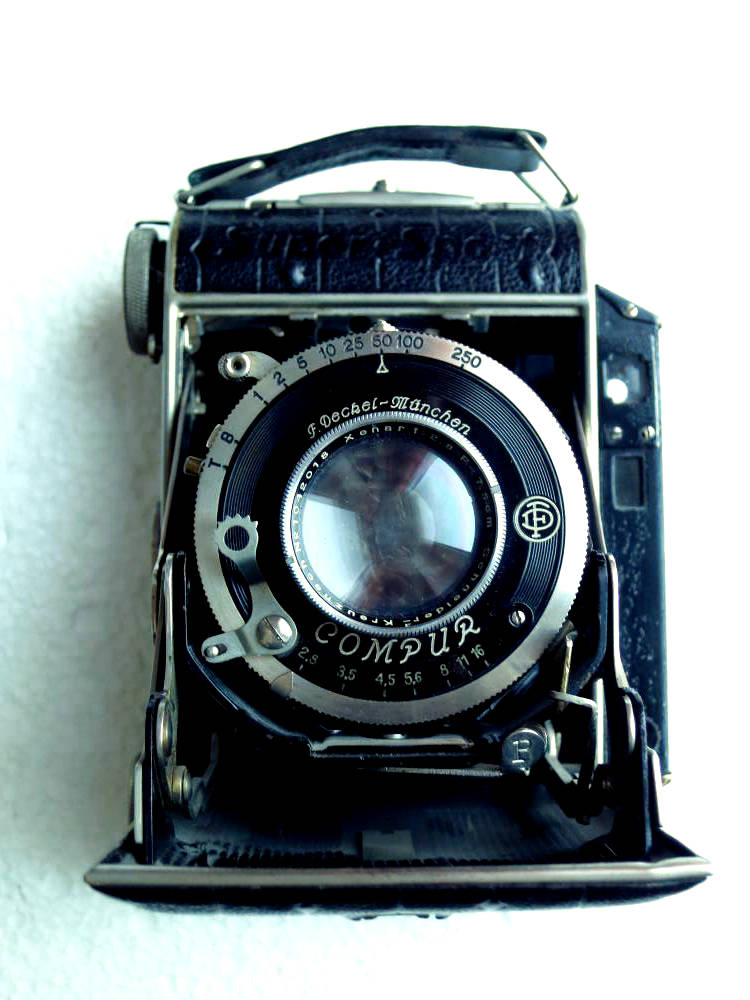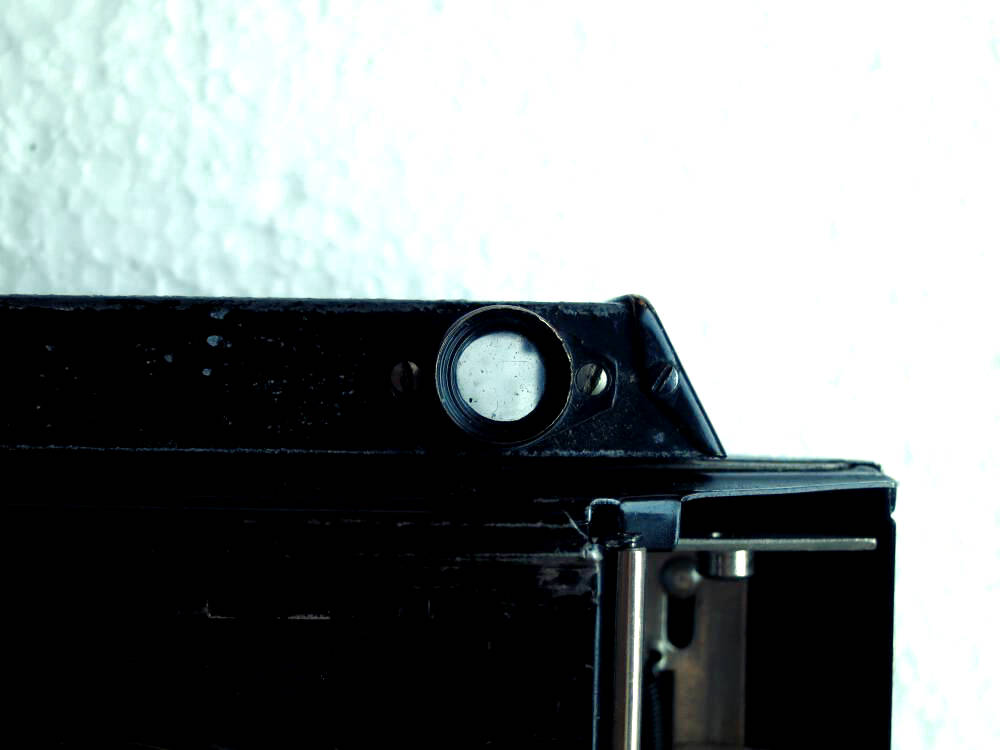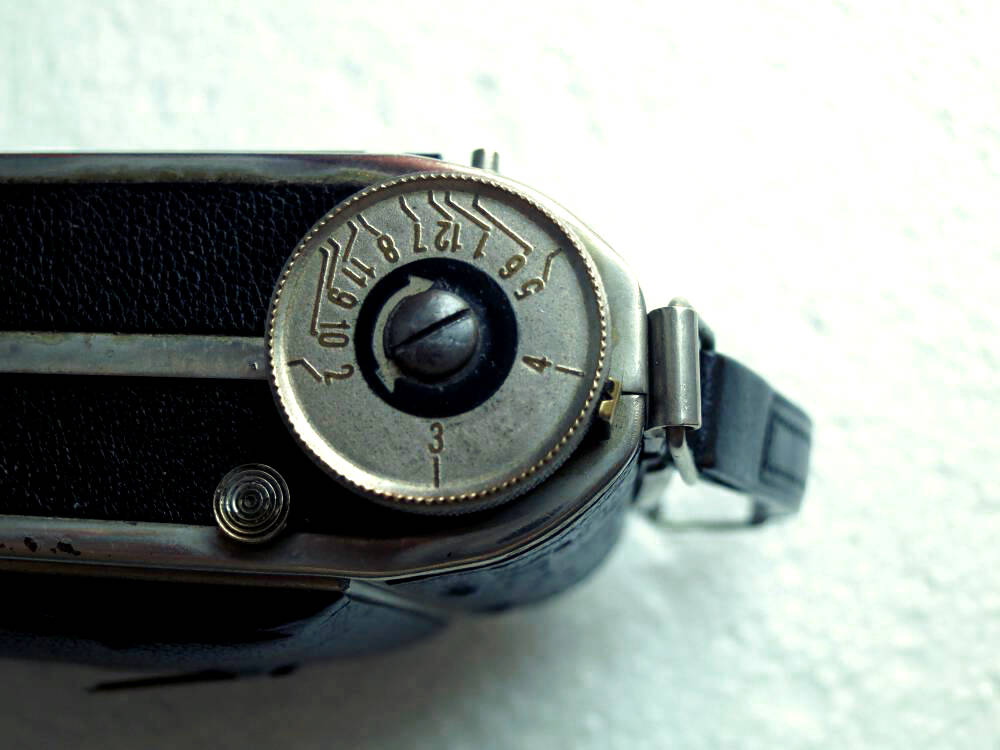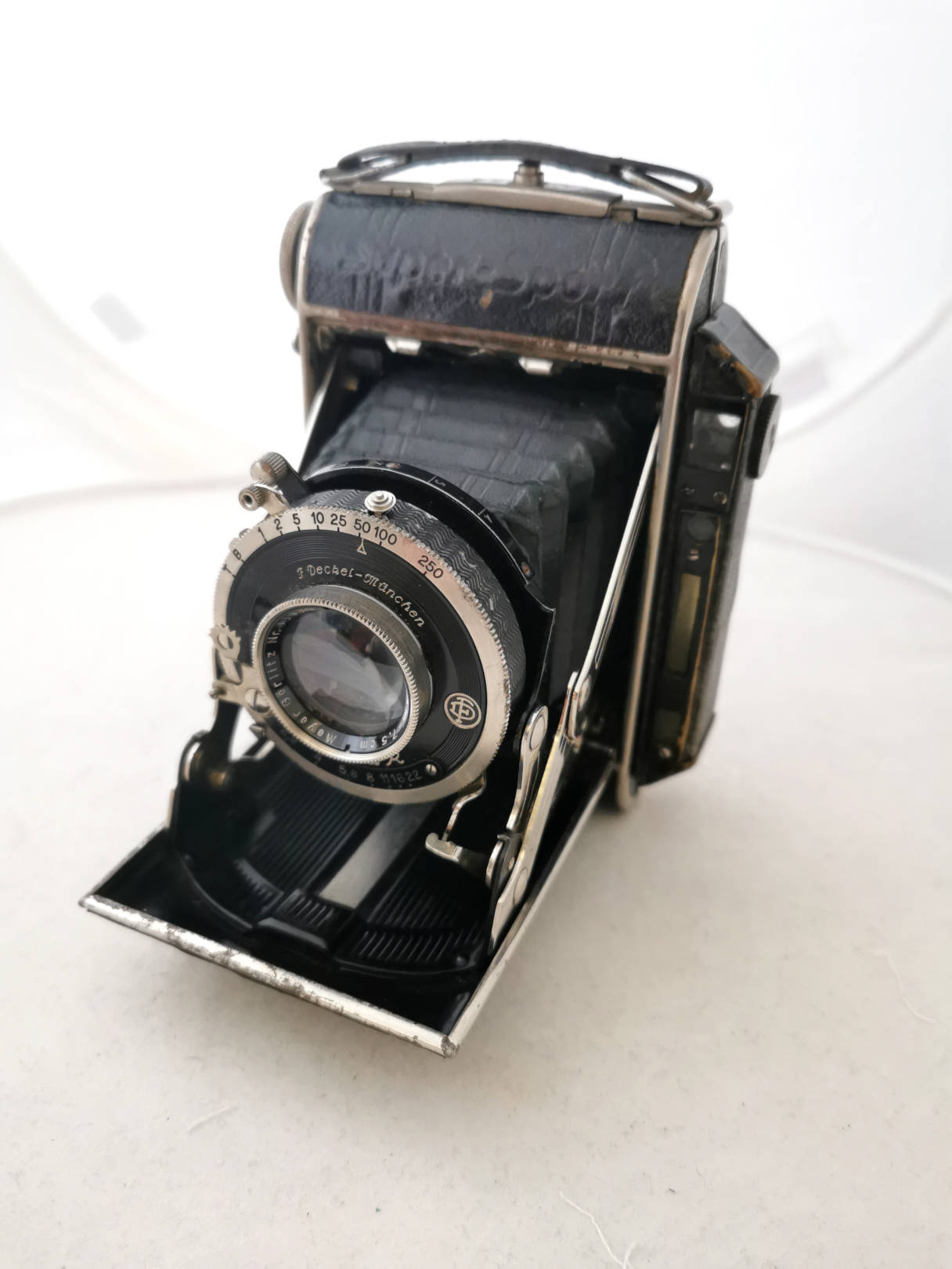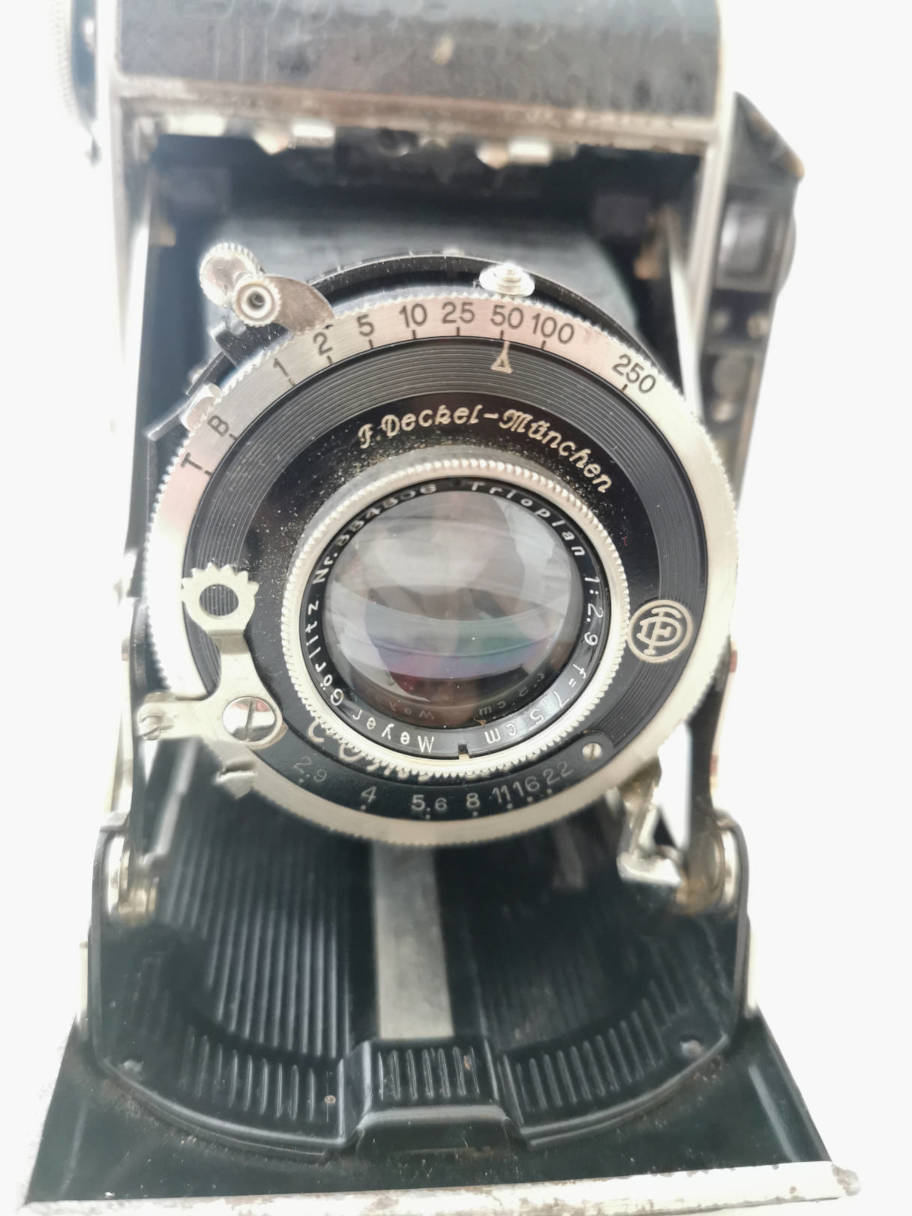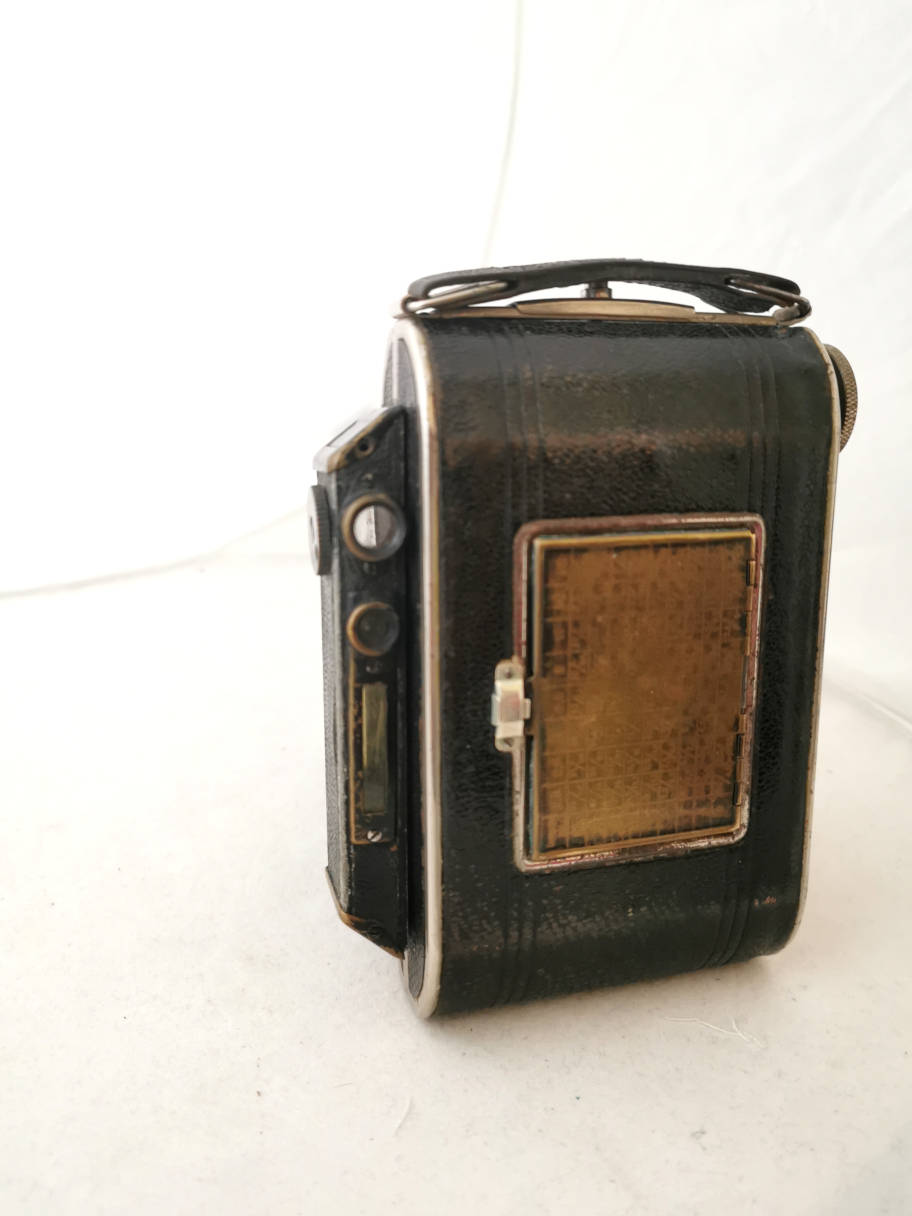The holder with its new ground glass. Nothing to unscrew, you only have to slide the little lever to open the frame. You can see the tight space: the hood and the magnifying glass are squeezed against the glass.
Frame open.
End of the first camera. In total I may have bought about 10 models, but I sent some back as they were broken. Up to now I kept 6 of them.
So now some photos of other models. The second is a B model, it has a sheet film unit, but no rewind:
This B model has a folding viewfinder...
...and no rewind device. The wind knob lacks the film advance numbers, a very handy device (see further above). It has however the nice back flap which can be replaced by the single sheet device.
The rest is nearly identical, same lens, same shutter. The focusing lever is a simle one, the shutter lever goes aroud the lens. You can press from both sides
